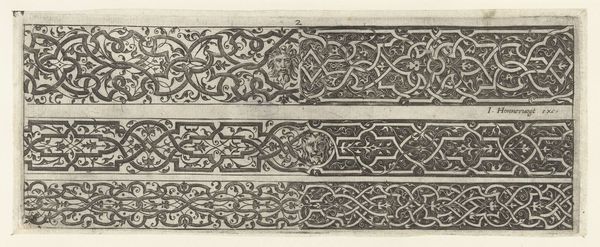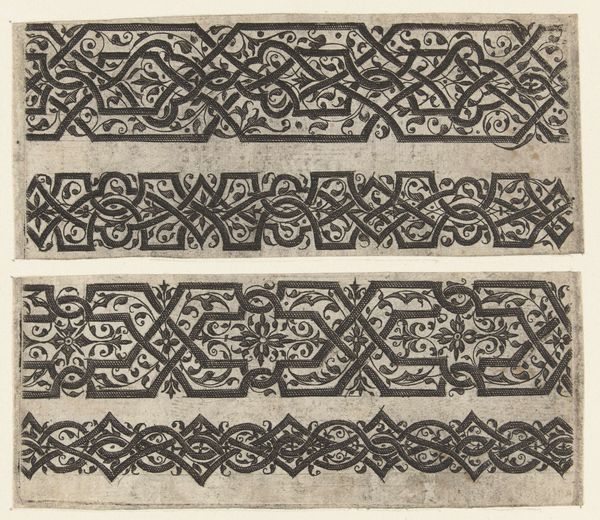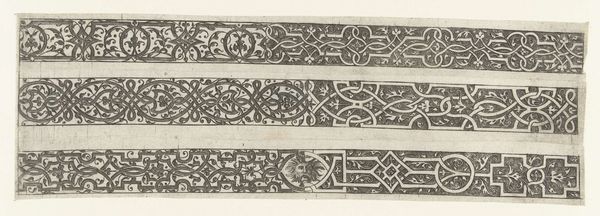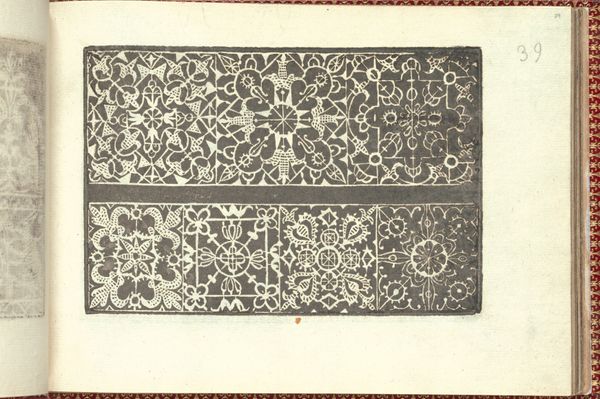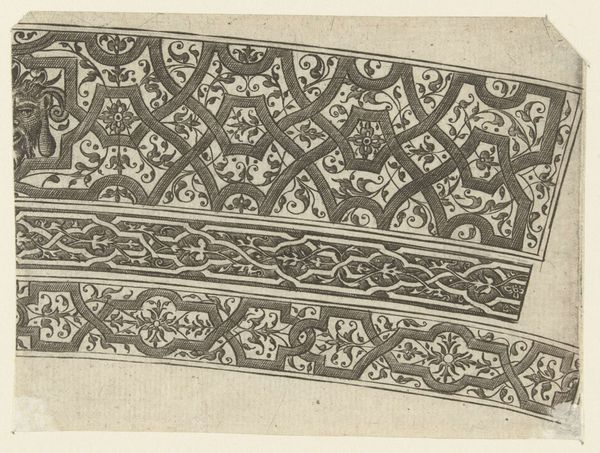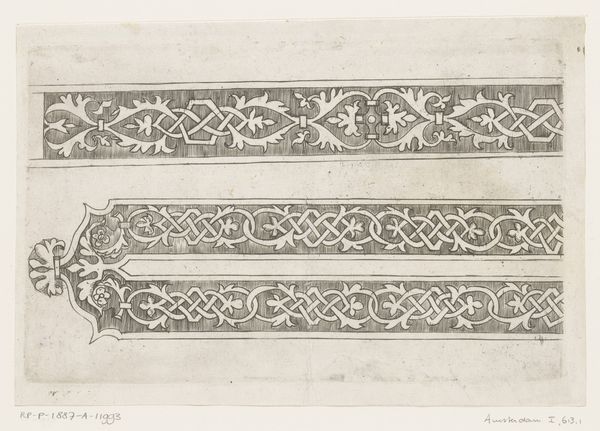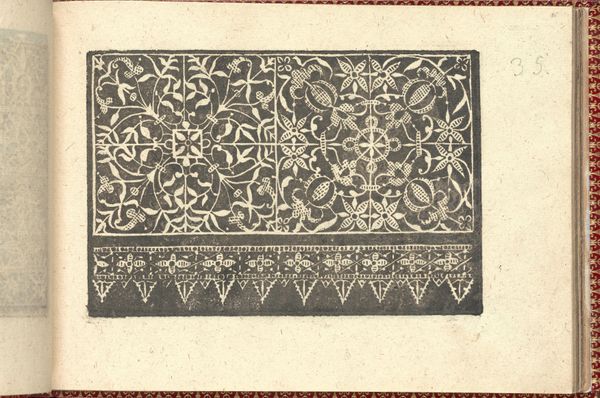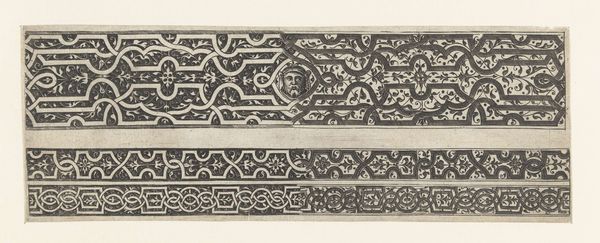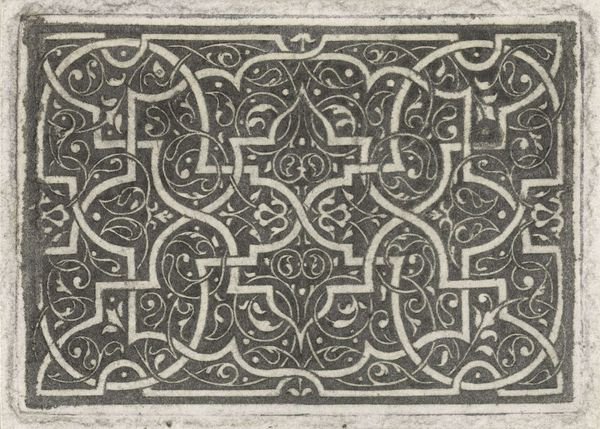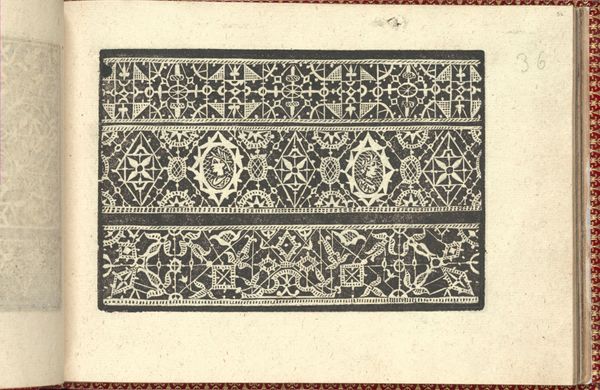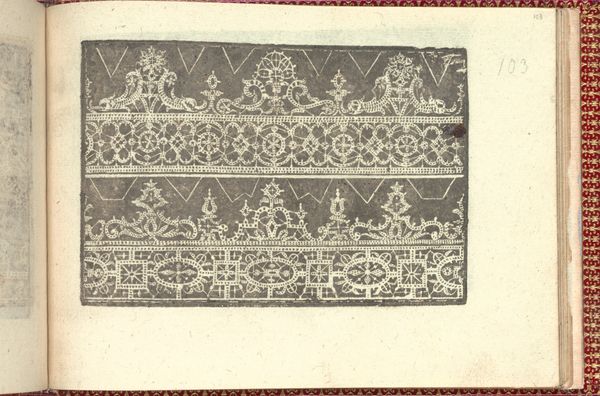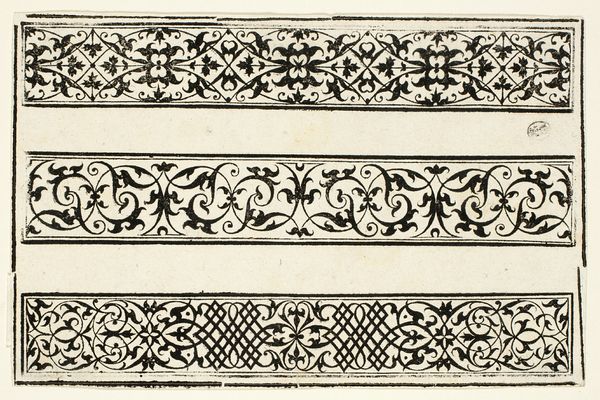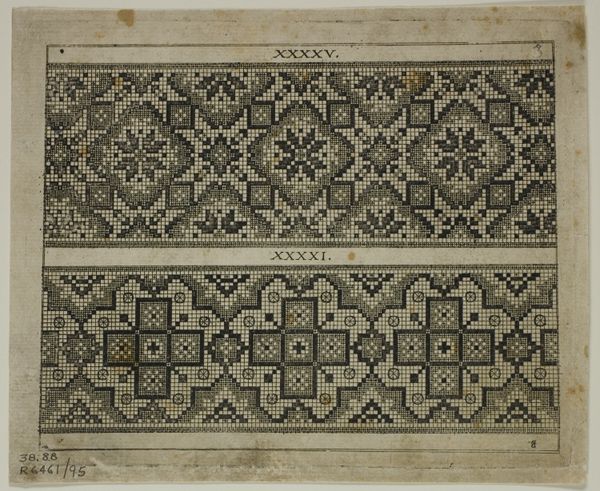
Drie friezen met zwarte moresken op een witte ondergrond 1528 - 1580
0:00
0:00
graphic-art, print, woodcut
#
graphic-art
#
medieval
# print
#
old engraving style
#
woodcut effect
#
linocut print
#
geometric
#
woodcut
#
line
#
pattern repetition
#
layered pattern
Dimensions: height 34 mm, width 111 mm, height 49 mm, width 111 mm
Copyright: Rijks Museum: Open Domain
These three friezes with black moresques on a white background were made by Balthazar van den Bos in the 16th century. The interweaving tendrils, leaves, and blossoms, meticulously arranged, speak to a larger symbolic order. Motifs like these were not merely decorative. They were employed across various artistic mediums, from manuscript illuminations to architectural details. Similar designs echo across time and geography, appearing in Islamic art, where geometric patterns symbolize the infinite nature of God, as well as in classical Roman mosaics. The central rosette, a floral motif, is particularly evocative. It has been used across cultures to represent cycles of life, death, and rebirth. The rosette is an ancient symbol, it appears in the art of Mesopotamia, Egypt, and Greece. Consider how such enduring symbols tap into a kind of collective memory, persisting in the subconscious, engaging viewers on a deeply intuitive level. Ultimately, the symbols in these friezes have undergone countless transformations. It is a testament to the enduring power of images to carry cultural memory forward through time.
Comments
No comments
Be the first to comment and join the conversation on the ultimate creative platform.
